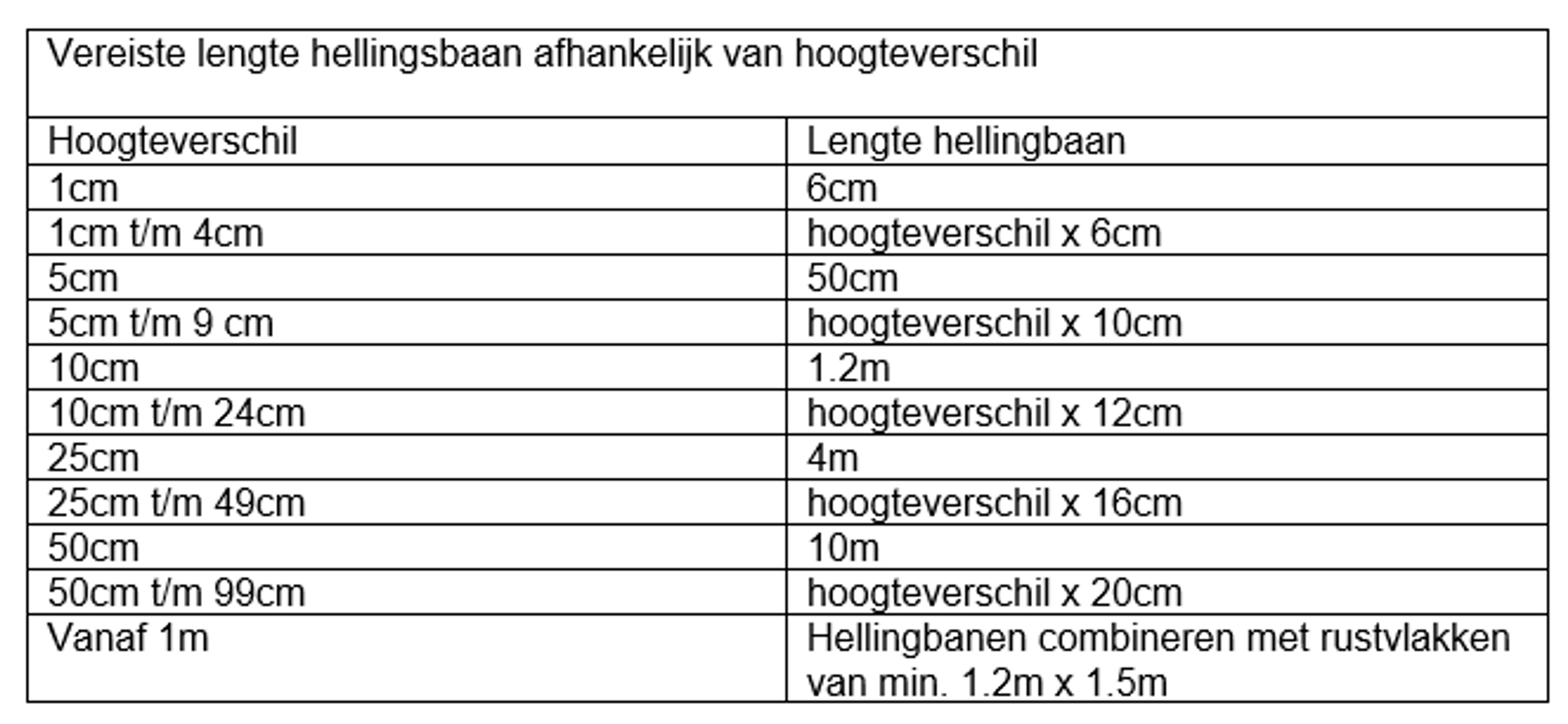
Physical accessibility
If people cannot enter your building or grounds then it soon ends. Sometimes the necessary facilities are already there and in some cases you will have to make your own arrangements. Think of aids such as a ramp or an accessible toilet. But also the routing on the site and whether the escape routes are suitable for visitors with disabilities. Don't forget to communicate the measures taken with your visitors and employees.
Podcast
In the podcast series Accessible Events, experienced visitors and experts share their experiences and presenter Tim Kroesbergen questions them on how to do even better. In this episode Tim talks to Maaike Jacobs of the Arnhem platform chronic sick and disabled foundation and Dirk Malschaert, organizer of the ASM festival about physical accessibility.
Download the transcript of this podcast episode.
Resources
To make the site or building accessible, consider the following things, among others:
- Toilets
- Furniture
- Ramps
- Transportation to the event
- Guidance
Toilet
Make sure there are (also) toilets that are easily accessible and large enough for people who use a wheelchair or walker, for example. It can also happen that people want to use the toilet very often for medical reasons. They often have a pass with which they can prove this and it is customary to grant them free access to the toilet.
Furniture
- Make sure doors or barriers are easy to open or have someone standing by to help in an emergency.
- Place a colored marker at any obstacles.
- Arrange places where people order and pay for something (the cash register, a bar, the checkroom) so that everyone can do so independently. Consider a lowered counter or a place or way that allows staff and guest to understand each other better.
- Make sure doors can open automatically, are open or can be operated at the push of a button.
Ramp
- Make use of "ramps" that allow people with wheelchairs or walkers to get up an elevation.
- Make sure the location does not have any uneven surfaces that could bother wheelchair users or people with walkers. If necessary, make use of driving plates or wooden decking.
- Provide a separate area for wheelchair users, if there really is no other way for them to properly attend the program.

Transportation to the event
- Reserve some parking spaces near the entrance and make sure they are more spacious.
- Set up a shuttle service to the nearest parking lot or ov stop and also clearly state this on the website.
Guidance
Often people with disabilities come with someone who accompanies them or could do so when needed, for example in case of emergency. You might make an exception for these people in terms of admission price, but that's up to you.
Rust- en stilteruimte
Op evenementen, waar het vaak druk, luidruchtig en overweldigend kan zijn, is een rust- of stilteruimte van groot belang voor bezoekers met prikkelgevoeligheid. Deze ruimte biedt een veilige en kalme omgeving waar mensen zich even kunnen terugtrekken om tot rust te komen en sensorische overprikkeling te voorkomen of te verminderen.
Routing around the grounds
De routing over het terrein, dus hoe bezoekers zich over het terrein bewegen, speelt een belangrijke rol bij het toegankelijk maken van je evenement. Denk bijvoorbeeld aan bewegwijzering. Informatieborden met de juiste contrasten en duidelijke lettertype, op een hoogte die ook vanuit een rolstoel te lezen is.
Lees hier meer over een correcte routing over het terrein.
Accessibility: escape routes
The moment you have people with disabilities on your property or in your building it is also essential that they are safe in the event of an emergency. That means that they must be able to reach the emergency exits independently or with supervision and that there are no obstacles. Also consider evacuation chairs when you're higher up in a building and you can't use the elevators.
Stel dat je besluit om over te gaan tot een ontruiming, dan zal die boodschap ook overgebracht moeten worden op mensen die niet goed kunnen horen of zien. Bijvoorbeeld door een alarmsysteem met geluid maar ook met een alarmlamp, een waarschuwingslicht dat flikkert.
It is helpful to know which people are coming and what disabilities they have. Even if it is not always possible, try to keep in touch with these people during the event or at the venue. When you submit your permit application, specifically indicate that visitors with disabilities are expected. This is so that emergency services are aware of this, and can take it into account.